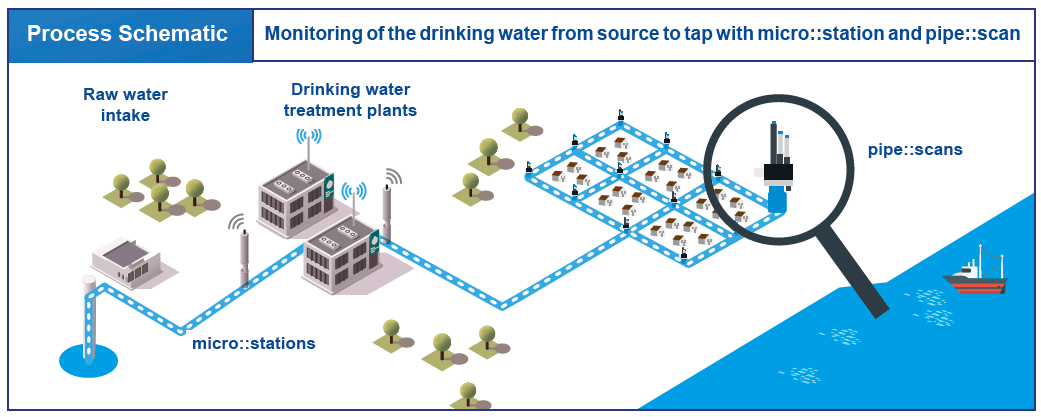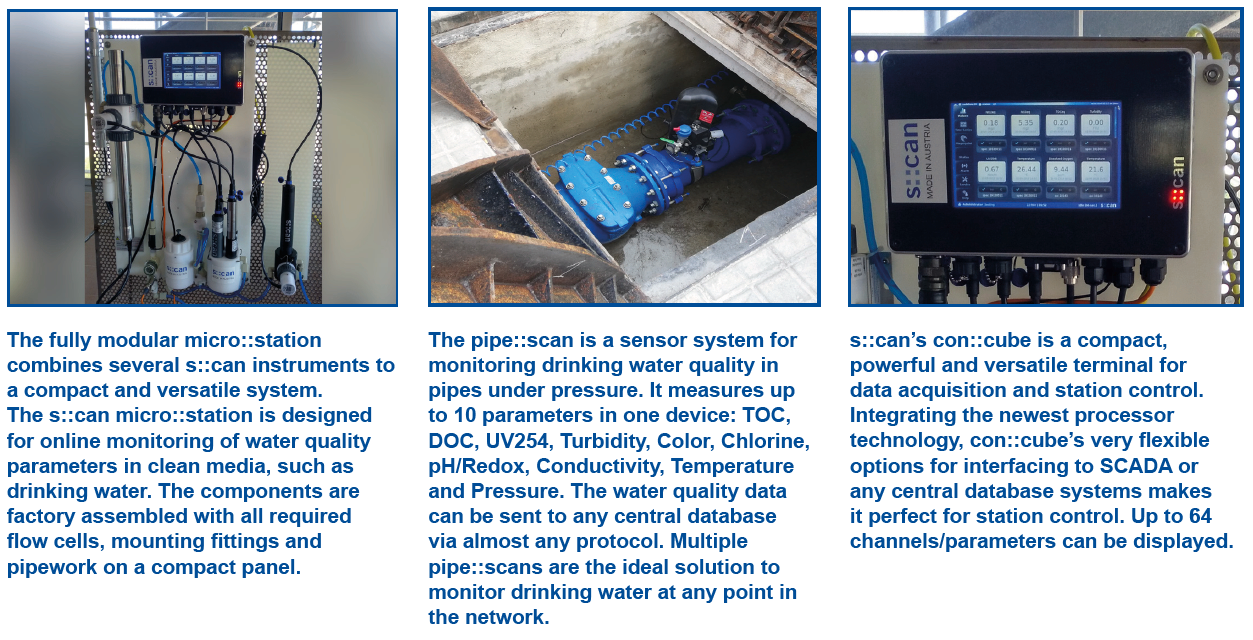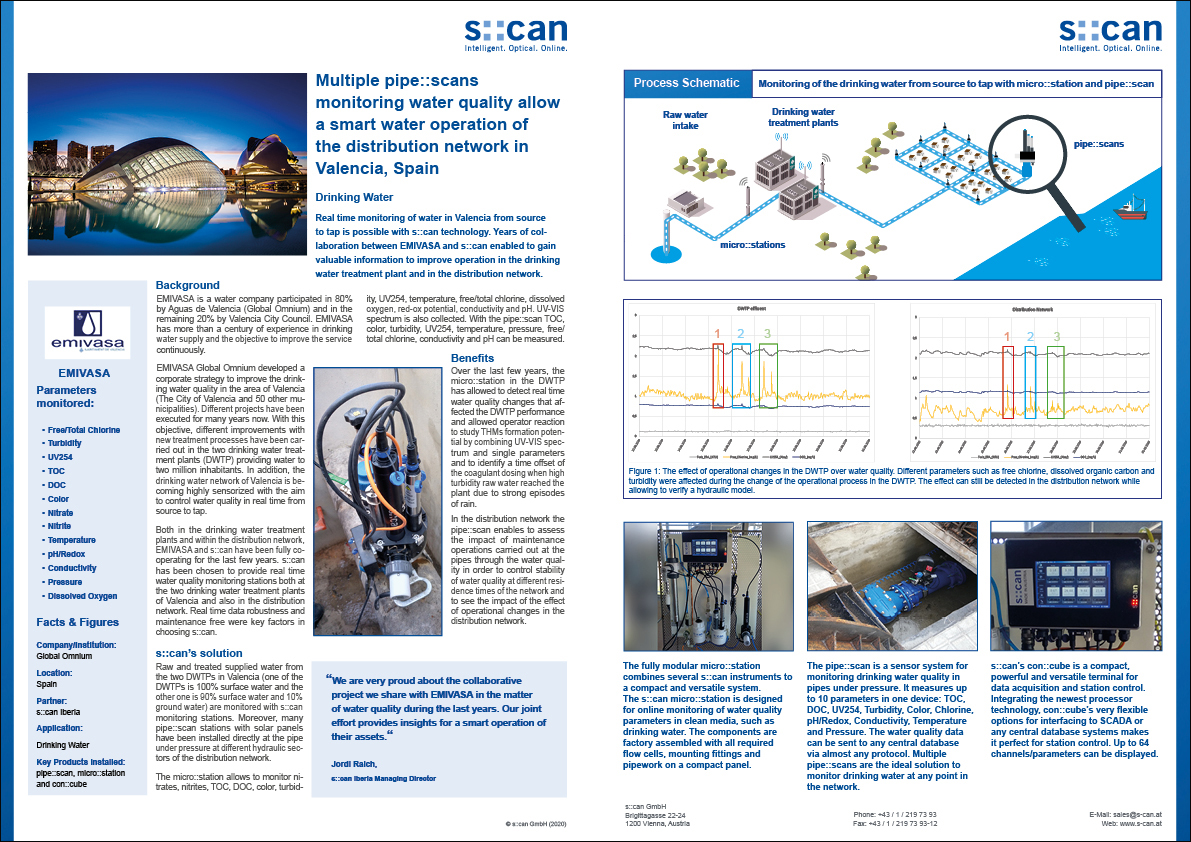Real time monitoring of water in Valencia from source to tap is possible with s::can technology. Years of collaboration between EMIVASA and s::can enabled to gain valuable information to improve operation in the drinking water treatment plant and in the distribution network.
Multiple pipe::scans for water quality monitoring allow a smart water operation of the distribution network in Valencia, Spain

Background
Background
EMIVASA is a water company participated in 80% by Aguas de Valencia (Global Omnium) and in the remaining 20% by Valencia City Council. EMIVASA has more than a century of experience in drinking water supply and the objective to improve the service continuously. EMIVASA Global Omnium developed a corporate strategy to improve the drinking water quality in the area of Valencia (The City of Valencia and 50 other municipalities). Different projects have been executed for many years now. With this objective, different improvements with new treatment processes have been carried out in the two drinking water treatment plants (DWTP) providing water to two million inhabitants. In addition, the drinking water network of Valencia is becoming highly sensorized with the aim to control water quality in real time from source to tap. Both in the drinking water treatment plants and within the distribution network , EMIVASA and s::can have been fully cooperating for the last few years. s::can has been chosen to provide real time water quality monitoring stations both at the two drinking water treatment plants of Valencia and also in the distribution network. Real time data robustness and maintenance free were key factors in choosing s::can.
s::can’s solution
Raw and treated supplied water from the two DWTPs in Valencia (one of the DWTPs is 100% surface water and the other one is 90% surface water and 10% ground water) are monitored with s::can monitoring stations. Moreover, many pipe::scan stations with solar panels have been installed directly at the pipe under pressure at different hydraulic sectors of the distribution network. The micro::station allows to monitor nitrates, nitrites, TOC, DOC, color, turbidity, UV254, temperature, free/total chlorine, dissolved oxygen, red-ox potential, conductivity and pH. UV-VIS spectrum is also collected. With the pipe::scan TOC, color, turbidity, UV254, temperature, pressure, free/total chlorine, conductivity and pH can be measured.
Benefit
Over the last few years, the micro::station in the DWTP has allowed to detect real time water quality changes that affected the DWTP performance and allowed operator reaction to study THMs formation potential by combining UV-VIS spectrum and single parameters and to identify a time offset of the coagulant dosing when high turbidity raw water reached the plant due to strong episodes of rain. In the distribution network the pipe::scan enables to assess the impact of maintenance operations carried out at the pipes through the water quality in order to control stability of water quality at different residence times of the network and to see the impact of the effect of operational changes in the distribution network.
Figure: The effect of operational changes in the DWTP over water quality. Different parameters such as free chlorine, dissolved organic carbon andturbidity were affected during the change of the operational process in the DWTP. The effect can still be detected in the distribution network whileallowing to verify a hydraulic model.



